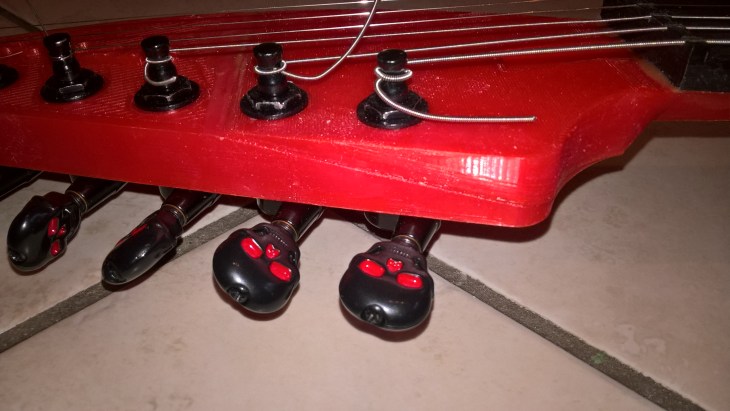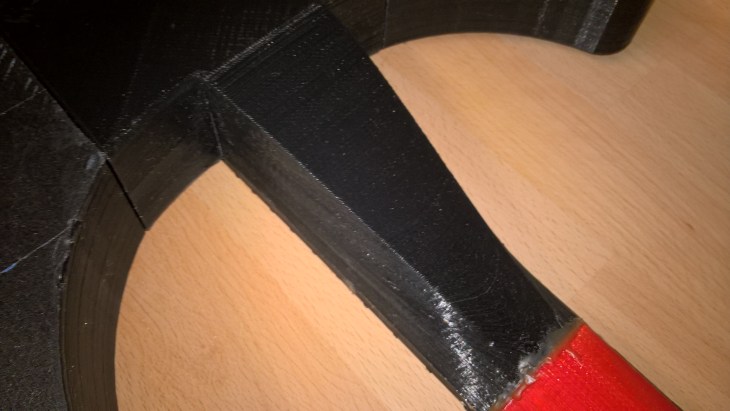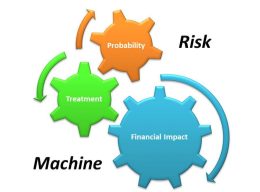In this part I will summarize the main improvements I have introduced in prototype 2 & 3.
- New head plate design:

- Head plate and neck are connected horizontally not vertically:

- I increased the wall thickness and fill grade of all neck parts and the head plate.
- Connection from neck to body more massiv and rounded edges:

- Fretboard parts overlap neck parts to increase stability.
- Headplate, neck parts, fretboard parts and connection to the body still glued togehter. The rest is screwed togeher to achieve reuse of the solid body and hollow body parts:

- Guitar scale has been shifted 3 cm in direction of the body. Therefore also the whole guitar is 3 cm shorter.
- The cover plates are countersunk in the hollow body parts now.
- The bridge parts are lowered in the body.
- And some other smaller constructional and design changes.
And this is a picture of the new prototype 3:

The swinging of the guitar neck could could be reduced but it is still to easy to bend it.
Here are also some sound examples played on a Black Star HT5 Metal combo:
Bridge Clean, Overdrive, Overdrive Muted:
Neck Clean, Overdrive, Overdrive Muted:
These examples are recorded with my Windows phone. The guitar has not been fine-tuned yet (string action, intonation, ect.) and the player has just yet begun to play e-guitar. So please excuse the poor technical quality.
I have some new ideas to further improve the stiffness of the neck of the guitar. I also want to experiment with Laywood material which is a mixture of PLA and wood powder. Therefore the next prototype 4 will also get a new look.
